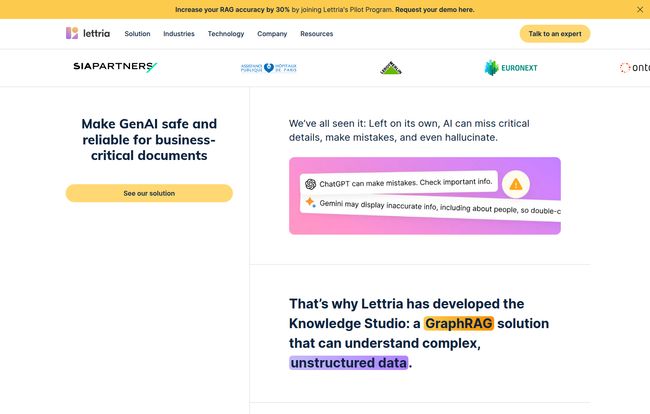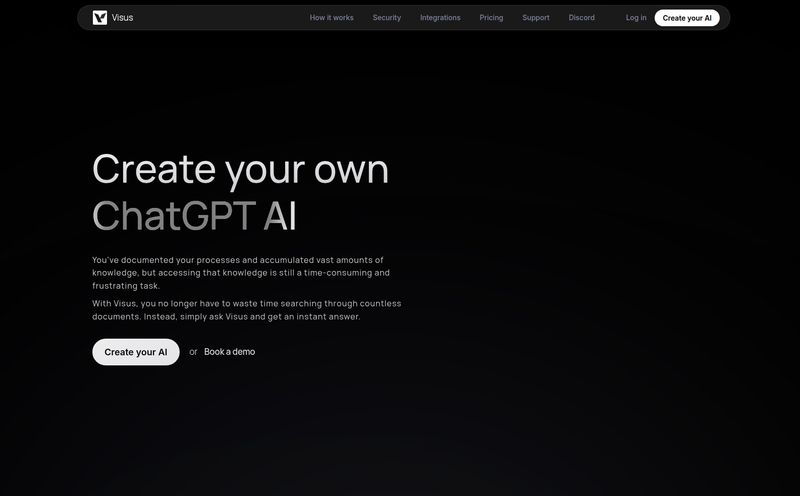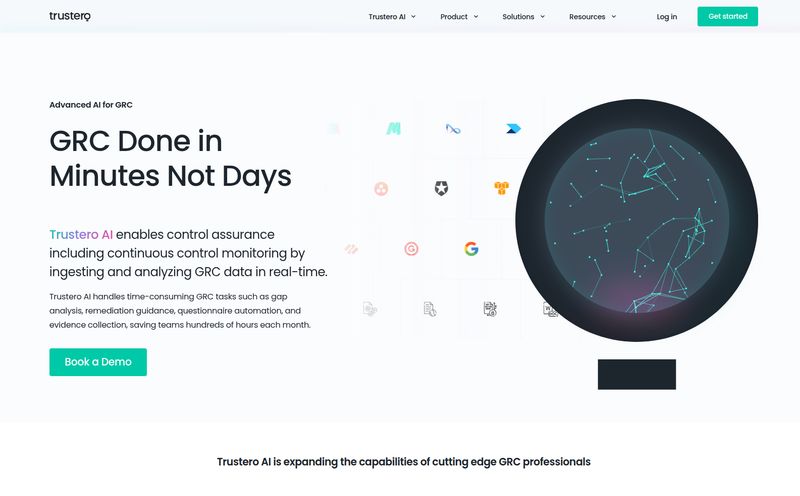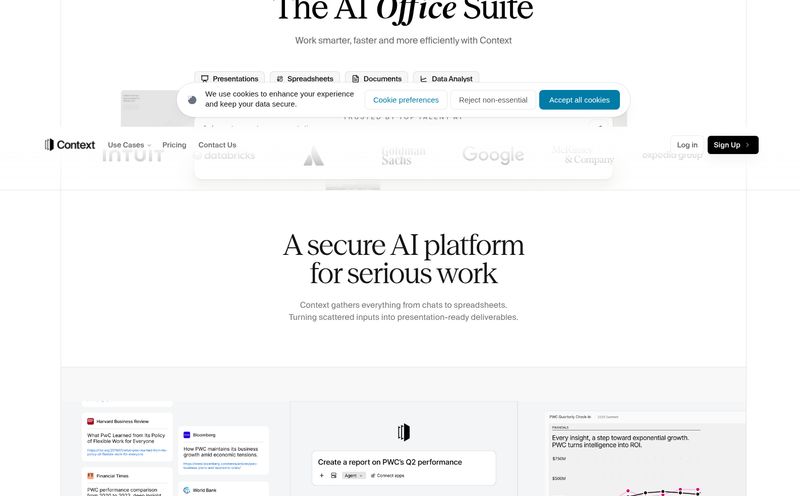We’ve all been there. You feed a prompt into your favorite GenAI tool, feeling like a digital wizard, only to get back an answer that’s confidently, spectacularly wrong. It might invent a legal precedent, misread a financial report, or just... make stuff up. For a casual user, it's a funny quirk. For a business relying on that data for a mission-critical decision? It’s a complete nightmare.
For a while, the industry’s answer has been Retrieval-Augmented Generation, or RAG. The idea is simple: give the AI a library of your own documents to read before it answers, so it’s not just pulling from the wild west of the internet. It's a good step. A necessary one. But it’s not a silver bullet. Standard RAG can still miss nuance, fail to connect related concepts across different documents, and get lost in the weeds of complex information.
And that’s where my curiosity was piqued by a platform called Lettria. They’re not just talking about RAG; they're talking about GraphRAG. It sounds like tech jargon, I know, but stick with me. This might just be the evolution we’ve been waiting for to make AI genuinely reliable for serious work.
So, What Exactly is Lettria?
At its heart, Lettria is a platform designed to do one thing exceptionally well: turn your mountain of messy, unstructured data—think PDFs, contracts, emails, research papers, technical manuals—into clean, structured, and interconnected knowledge. It's an AI that reads and understands, not just one that pattern-matches.
The best analogy I can think of is this: a standard search engine is like a librarian who can quickly find you all the books that mention 'photosynthesis'. Lettria is the librarian who has read all those books, understood them, and can now draw you a detailed diagram showing how photosynthesis relates to carbon cycles, plant biology, and even solar energy policy, citing the exact page in each book where the information came from. It builds a map of your knowledge.
And here’s the kicker for many teams I’ve worked with: they’ve built this on a no-code platform. You don't need to be a data scientist with a PhD in ontology engineering to start making sense of your data. It’s designed to bridge that gap between the tech wizards and the business experts who actually need the answers.
The Elephant in the Room: AI Hallucinations
Let's be real. The term 'AI hallucination' is a polite way of saying 'the AI lied to me.' In high-stakes fields like finance, healthcare, legal, and engineering—Lettria's core target audience—a single 'hallucination' isn't just an error. It can lead to a bad investment, a flawed engineering spec, a compliance breach, or a misdiagnosis. The cost is astronomical.
This is why the promise of “transparent, verifiable AI” on Lettria’s site caught my eye. It’s not enough for an AI to give you an answer. You need to be able to click on it and ask, “Okay, prove it. Show me your work.” That traceability is the foundation of trust, and frankly, it's been missing from a lot of the GenAI hype cycle.
Enter GraphRAG: Lettria's Secret Sauce
Okay, let's get into the nerdy stuff. Most RAG systems today use something called vector search. It’s powerful, but it essentially works by finding chunks of text that are semantically similar to your query. It’s a game of proximity.
Lettria’s GraphRAG is different. Instead of just storing data chunks, it builds a knowledge graph. Imagine a giant, interconnected web. Each node is a key entity—a person, a company, a project, a chemical compound—and the lines (or 'edges') connecting them represent their relationships. This 'contract' is signed by this 'person', who is an employee of this 'company', which is a defendant in this 'lawsuit'.
When you ask a question, the AI doesn’t just look for similar text; it traverses this graph of relationships. This allows it to answer much more complex, multi-step questions. It’s the difference between asking “What is a merger agreement?” and “Show me all merger agreements signed by our company in the last year with a clause related to intellectual property transfer, and list the executives involved.” That second question is where vector search starts to sweat, and GraphRAG shines.

Visit Lettria
Lettria even put their money where their mouth is, publishing a benchmark claiming a 38% increase in accuracy over traditional VectorRAG. In the world of enterprise data, a 38% improvement isn’t just an edge; it's a whole new ballgame.
A Look Inside Lettria’s Knowledge Studio
The engine room for all this magic is the Knowledge Studio. It’s where you manage the whole process, from feeding in documents to getting out insights. A few key components stand out:
- Text to Graph Pipeline: This is the automated process that reads your documents and builds that all-important knowledge graph. It’s the assembly line for turning raw text into structured intelligence.
- Ontology Enrichment: Fancy term, simple concept. This is where you teach the machine your business's unique language. You define what a 'project milestone' or a 'supply chain partner' is and what properties they have. It’s a bit of up-front work but it's what makes the results so incredibly tailored and accurate.
- Building a Private GPT: This is a huge one. You can use this structured knowledge to build your own private, secure chatbot that is an expert only on your company's data. No data leakage, no weird answers pulled from a public forum, just factually grounded responses from your own documents.
Who is This Actually For?
Looking at their client list—which includes heavy-hitters like TotalEnergies, La Poste, and SIAPARTNERS—it's clear this isn't a tool for whipping up a quick blog post. This is enterprise-grade software for organizations drowning in complex, high-value unstructured data.
Think about it: engineering firms with decades of project documentation, law firms with millions of case files, or financial institutions needing to perform due diligence across thousands of reports. The testimonial from Brad Beblo at AWS sums it up nicely: “...our project managers went from having to sift through 100’s of files to answer client questions to being 10 times faster thanks to graph-data.”
Ten times faster. That’s not a marginal improvement. That’s a transformation in workflow. The fact they’ve earned a “High Performer” badge from G2 for Spring 2024 tells me that real users are seeing real value, which is more important than any marketing slick.
What's the Catch? And What About Pricing?
Alright, it can't all be sunshine and roses. The first thing that jumps out is that this isn't a plug-and-play tool for the technically faint of heart. While it's a no-code platform, you still need to have a solid grasp of your own data and processes. The concept of building an ontology, even with a user-friendly interface, requires some thoughtful input. This isn't your grandma's keyword search, it requires a bit more strategic thinking.
And now for the question on everyones mind: pricing. You won’t find a pricing page on Lettria's website. It’s all “Request a demo” or “Talk to an expert.” This is standard practice for enterprise SaaS, and it tells you a few things. First, it’s not going to be cheap. Second, the pricing is likely customized based on data volume, complexity, and the level of support you need.
My take? Don't expect a simple monthly subscription fee. This is an investment in your core data infrastructure. You're not buying a tool, you're buying a solution to a multimillion-dollar problem.
Final Thoughts: Is Lettria Worth the Hype?
Honestly, I'm a bit tired of the 'move fast and break things' mentality when it comes to AI, especially when it's applied to business-critical functions. Lettria feels different. It feels like a move towards 'move carefully and build trust'.
By focusing on verifiability and tackling the hallucination problem head-on with GraphRAG, they are addressing the single biggest barrier to enterprise AI adoption. It’s a trade-off. You sacrifice the instant gratification of a simple public chatbot for the long-term reliability and accuracy of a system that truly understands your data.
For any organization where the cost of being wrong is high, that seems like a pretty smart trade to make. This isn't just about getting answers faster; it’s about getting the right answers, every single time.
Frequently Asked Questions (FAQ)
- What is GraphRAG and how is it different from regular RAG?
- GraphRAG builds a knowledge graph that maps relationships between entities in your data. Regular RAG (often using vector search) finds text chunks that are semantically similar to your query. GraphRAG can answer more complex, multi-step questions because it understands the context and connections, while vector search is better for direct similarity lookups.
- Is Lettria difficult to use for non-technical teams?
- Lettria is built on a no-code platform specifically to be accessible to business users and subject matter experts, not just data scientists. However, a good understanding of your business's data and processes is necessary to get the most out of it, particularly when defining your ontology (your business-specific rules).
- What kind of data can Lettria process?
- The platform is designed to handle all kinds of unstructured data. This includes text-heavy documents like legal contracts, scientific research papers, financial reports, technical manuals, customer support tickets, and emails.
- How much does Lettria cost?
- Lettria does not publish its pricing publicly. It operates on an enterprise sales model, which means you need to contact their sales team for a custom quote or request a demo. Pricing is typically based on factors like data volume, project complexity, and support needs.
- Does Lettria offer a free trial?
- While there isn't a self-serve free trial, they offer a Pilot Program for new users to test the platform with their own data. This is a common approach for enterprise software, allowing for a more guided and effective evaluation period.
- Can I build my own secure chatbot with Lettria?
- Yes, one of the key features is the ability to build a Private GPT. This is a generative AI chat application that is trained and operates exclusively on your own verified knowledge graph, ensuring data privacy and factually grounded answers.



